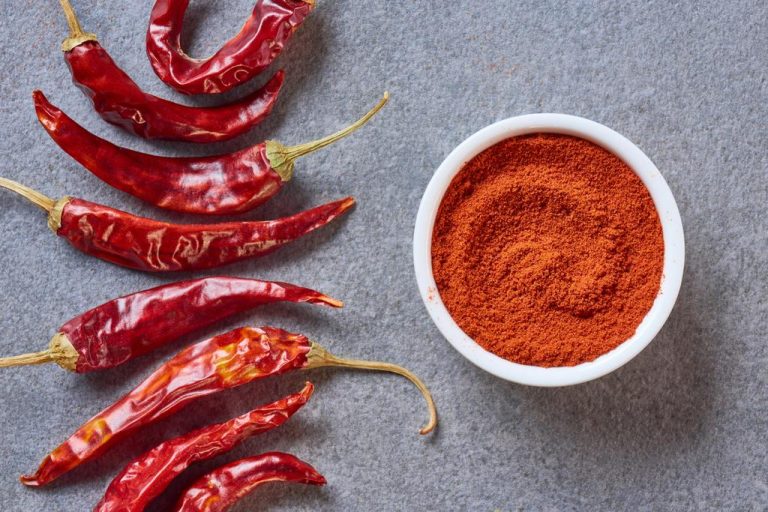Capsacin provides the spiciness in chili, cayenne pepper and Co. You can read here why the plant substance not only flavors the food, but also alleviates physical complaints.
Capsacin is one of the natural alkaloids. It is found in paprika, chili, pepperoni and cayenne pepper and is one of the hottest substances in the world. Incidentally, the characteristic sharpness of a ginger root does not come from capsacin, but from the substance gingerol it contains.
Due to its valuable effect on the body, the plant substance capsacin is not only used in cooking. Capsacin is used internally and externally for physical ailments. In high doses it is also used in pepper spray and causes severe irritation of the mucous membranes.
This is how the plant substance capsacin works
You have certainly experienced the direct effect of capsacin on your own body. If you’ve already bitten into a chili pepper, your lining in your mouth has started to burn. If you then swallowed the chili, you also felt the sharpness in your esophagus and stomach.
It is well known that spicy food burns twice. Once when you eat and once again when you eliminate the food. But the spicy substance is not only found in food. It is also used for medicinal purposes.
According to a 2015 study, capsacin has several positive effects on physical health. Among other things, the plant substance works as follows:
Capsacin is a powerful antioxidant.
It has an antibacterial and antifungal effect,
protects the liver from toxins,
strengthens the gastric mucosa,
positive effects on blood sugar levels
stimulates the metabolism
promotes fat burning
the plant substance has a warming effect,
supports the expansion of blood vessels,
promotes blood circulation,
and relieves pain.
The nerve endings of the skin are irritated when ointments or patches containing capsacin are applied externally. If the substance is left on the skin, the pain will be relieved after a while. Often the affected area even feels slightly numb.
This is how capsacin can be used
Because of its warming effect, which stimulates blood circulation, capsacin is often used to relieve tension. Capsacin-containing ointments, gels or patches are used especially for neck pain or other muscle complaints. The sharp substance also relieves joint or nerve pain and is also often used for rheumatic complaints.
There are also nasal sprays that contain the substance in small doses. Especially when the nose is severely blocked, the blood circulation can be stimulated, the secretion loosened and drained.
If you want to lose weight naturally, you should also use meals that contain cayenne pepper or chilies. This stimulates the metabolism and you burn fat faster. In this case, additional capsules are sometimes recommended for internal use. However, we advise you to influence your body as naturally as possible and to avoid dietary supplements.
The plant substance capsacin is also playing an increasing role in cancer research. A study from 2011 was able to prove that a certain enzyme no longer works in cancer patients. This should actually ensure that diseased cells die and stop multiplying. In the study, capsacin was able to take over the role of the inactive enzyme. These results could be relevant in the future for breast, pancreas, lung and prostate cancer.
What you should consider when using capsacin
If you handle food containing capsacin in the kitchen, you should absolutely avoid coming into contact with your eyes, ears or mucous membranes. The sharpness on your fingers can cause painful burning and severe irritation. Be sure to wash your hands thoroughly after cooking.
External use of capsacin can cause the skin to become somewhat irritated and reddened. If you experience an extreme burning sensation or blisters form, you are probably overreacting to the heat and should stop using it immediately.
If your skin is broken, it shouldn’t come into contact with the sharp substance at all. The same applies to the sensitive skin of babies and small children. There are often milder home remedies to alleviate physical discomfort.

